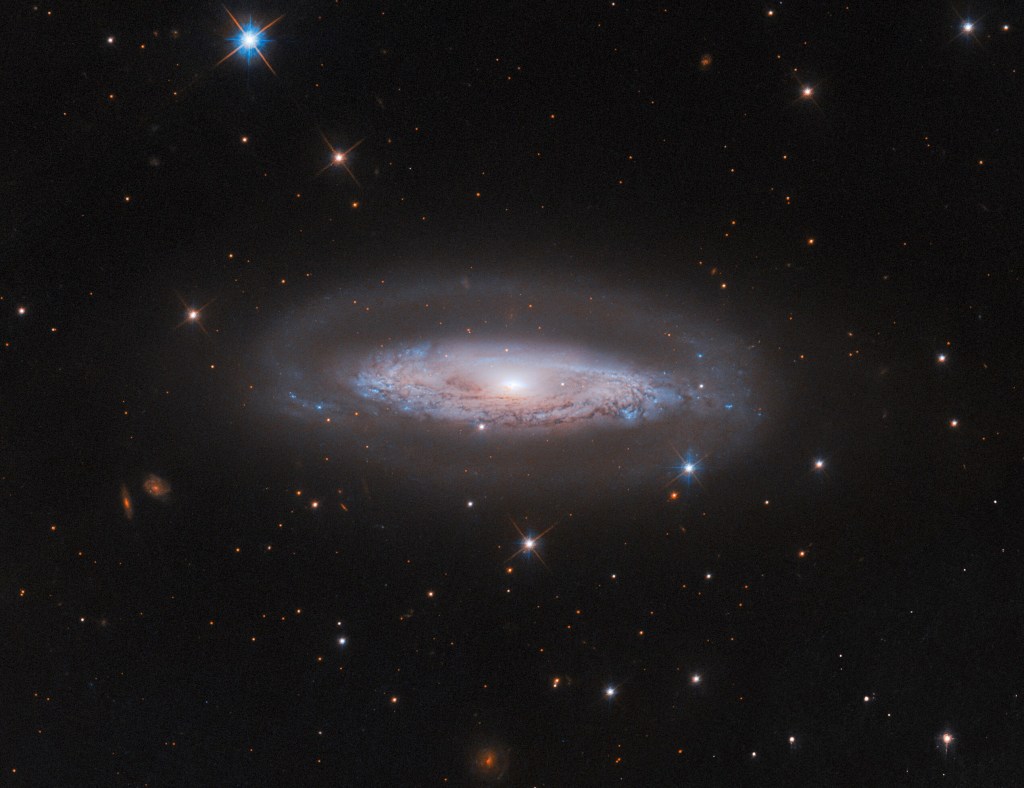If IC 4709’s core just held stars, it wouldn’t be nearly as bright. Instead, it hosts a gargantuan black hole, 65 million times more massive than our Sun. A disk of gas spirals around and eventually into this black hole, crashing together and heating up as it spins. It reaches such high temperatures that it emits vast quantities of electromagnetic radiation, from infrared to visible to ultraviolet light and X-rays. A lane of dark dust, just visible at the center of the galaxy in the image above, obscures the AGN in IC 4709. The dust lane blocks any visible light emission from the nucleus itself. Hubble’s spectacular resolution, however, gives astronomers a detailed view of the interaction between the quite small AGN and its host galaxy. This is essential to understanding supermassive black holes in galaxies much more distant than IC 4709, where resolving such fine details is not possible.
